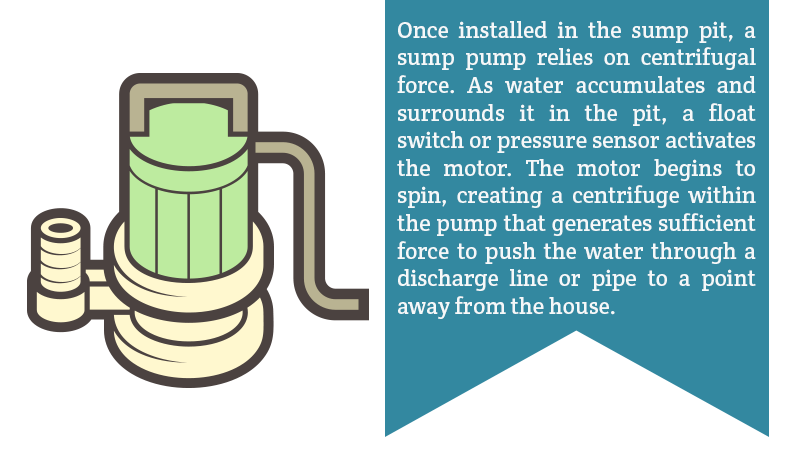Contrary to what some people think, the need for sump pumps is not limited to homes in flood zones or extremely rainy climates. Water can saturate the ground and build up under and around the perimeter of your home’s foundation, and from there, can migrate into your basement or crawlspace. This is especially true if you have a high water table. Have you thought about installing one to keep your basement flood free?
The accumulation of water can result in any or all of a homeowner’s worst fears, some of which include:
Installing a sump pump to remove water minimizes these risks. It also relieves hydrostatic pressure which can cause cracks in the foundation.
To effectively rid your home of accumulated water, the sump pump should be installed below floor level. Therefore, step number one is to dig a hole called a sump pit and line it with gravel. Being the lowest point in the basement, the pit will serve as a reservoir for any excess water, whether it enters through a drain or natural migration. It will also house the sump pump.

Once installed in the sump pit, a sump pump relies on centrifugal force. As water accumulates and surrounds it in the pit, a float switch or pressure sensor activates the motor. The motor begins to spin, creating a centrifuge within the pump that generates sufficient force to push the water through a discharge line or pipe to a point away from the house.
Now that you understand the operating principle, it’s time to choose the type: submersible or pedestal.
Submersible sump pumps are encased in waterproof housing and installed at the bottom of the pit, while pedestal models are installed above the basement floor and have inlet pipes or hoses that reach into the pit and below the waterline. Pedestal pumps consist of two pieces and are powered by standalone motors mounted on a pole. Each has its pros and cons. Pedestal sump pumps last longer than submersible ones but cost more, but submersible sump pumps have greater pumping power but involve more in the way of installation.

No matter which type you decide on, Crawford Mechanical Services can work on sump pumps and any other plumbing issues in your home. Contact us today to get started.